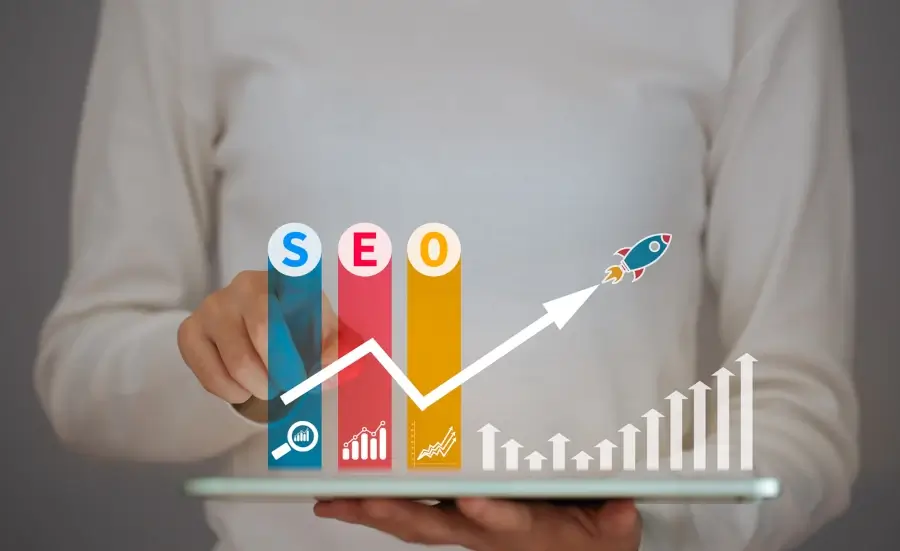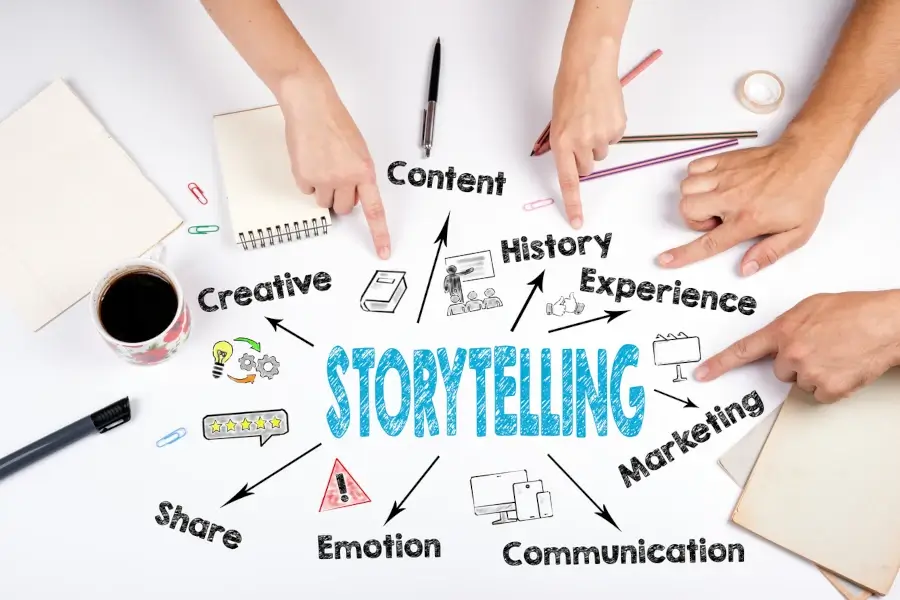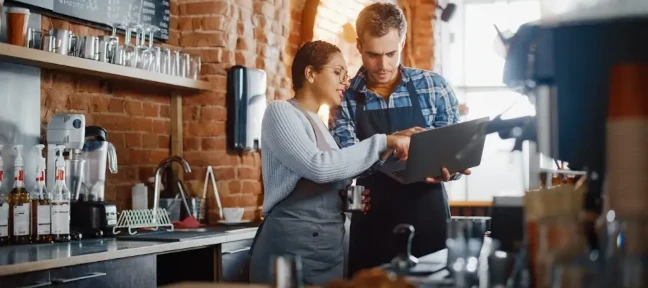Digital marketing is a rapidly changing industry. New platforms, technologies, and opportunities are popping up all the time. Sometimes the amount of data available can be overwhelming and you don't know what to do. The problem becomes more challenging if you're a beginner.
Let's be frank here. Digital marketing is incredibly complex, which leaves a lot of room for mistakes. The good thing is you already have a lot of online marketing tools to help you out. Greencheck.ai, for example, provides you with a detailed performance report. This way, you can easily spot areas for improvements before you drain your cash flow into SEO efforts that won't bear fruit.
Then, you can take a digital marketing course beginning with these most popular questions about the topic:
1. What Is Digital Marketing?

What is digital marketing? Digital marketing is an umbrella term for the marketing of products or services using digital technologies, mainly on the Internet, but also including mobile phones, display advertising, and any other digital medium.
It is different from branding since it represents a broader, more integrated, and holistic approach to promoting products or services. It is also different from online marketing since it does not simply describe the "online" part of a traditional marketing campaign.
Avenues available for digital marketing are social media, search engine optimization (SEO), search engine marketing (SEM), content or brand-driven websites, email marketing, online videos, and display advertising.
Let's discuss each here.
What Is Social Media Marketing?
Social media marketing is an umbrella term that describes the use of social media channels and mobile apps for marketing purposes. It includes activities such as:
-
Posting text, images, or videos on social media pages to share a brand's content with users.
-
Interacting with potential customers through their social media accounts.
-
Building loyalty and trust among consumers.
-
Promoting products or services by encouraging people to look at specific. content on the brand's social media channels.
Social media is a highly popular form of marketing for many reasons. First, creating social media presence is almost free. Marketing on social media platforms provides businesses with an accessible, low-cost way to communicate directly with consumers in real-time. It allows businesses to humanize their brands in the eyes of potential customers by appearing more casual in tone and giving them a behind-the-scenes look at what is going on within the company through their social media posts.
Second, social media provides a way for businesses to track the effectiveness of their digital marketing campaign. Social media reporting, for instance, can include information on how many people click on links leading from a brand's social pages to its website.
Businesses can now gauge the level of their social media marketing success. They will know where customers come from and whether the campaign is generating the desired consumer response.
Third, social media is highly accessible. This means that businesses can conduct their marketing campaigns virtually anywhere and at any time through the use of mobile phones, computers, tablets, etc.
What Is Search Engine Optimization (SEO)?

Search engine optimization (SEO) refers to the process of optimizing a website, blog post, or other content so that it ranks higher in results on search engine results pages (SERPs). A digital marketer can do this by using keywords and paying close attention to phrases that searchers type into the Google search engine and what they click on when searching for certain terms or topics.
SEO has two broad categories: on-page and off-page optimization. On-page optimization refers to the content of a webpage while off-page optimization refers to activities that organizations do away from their websites.
On-page optimization is about making sure that all of the content on an individual webpage (a blog post, for example) includes keywords and is well written, so it naturally attracts visitors. On-Page SEO includes:
-
Making sure a webpage has a goal and is map-able.
-
Using keywords naturally in titles, headings, URLs, etc.
-
Optimizing images for search engines.
-
Structuring text content.
Off-page optimization is about promoting a webpage through activities such as obtaining backlinks, social media marketing, and guest blogging. Off-Page SEO includes:
-
Doing quality link building with other websites to boost SEO traffic.
-
Building credibility through citations and testimonials.
-
Assigning keywords to pages on an organizational website by using metadata or social media keywords.
What is the value of SEO in digital marketing? SEO is a valuable part of digital marketing because it helps search engines index content so that users are able to find it. For businesses, SEO allows them to gain visibility within their target market to drive natural website traffic and conversions.
What Is Search Engine Marketing (SEM)?
SEM refers to the process organizations go through to generate website traffic from organic or paid search results. This includes activities such as:
A. Paid Search Engine Marketing
Paid search engine marketing refers to the process of ranking high in various paid searches. Examples include Google Ads (formerly Google AdWords), Bing Ads, Facebook Ads, etc.
How does it work? The goal of paid search engine marketing is to build a presence on relevant keywords and phrases that potential customers use when searching for information. This process involves evaluating the competition to determine how much it will cost to rank high in the natural results versus the paid results.
Consider this example. A company is selling a new barbecue grill cover and plans to do a paid search through Google Ads.
To do this, they first have to determine what phrases potential customers are typing into Google when searching for that item. By using digital marketing tools, they would be able to see which keywords have the highest natural ranking and also how much it costs per click to show up in paid search ads.
The company could then determine whether it makes sense to pay a higher price per click to rank high in the natural results or if it makes more sense to rank high in paid search results.
There are different ways to pay for ads. One is pay-per-click (PPC), wherein the advertiser only pays when a visitor clicks on the ad. Another is cost per impression (CPM), where the advertiser only pays when an advert is shown.
B. Organic Search Engine Marketing
Organic search engine marketing refers to the process of building a presence for an organization on relevant keywords and phrases without having to pay a fee for each click. While there may not be a fee each time someone clicks on the link, marketers still need to determine what phrases and keywords they should optimize to get the most incoming search traffic.
What is the difference between SEO and SEM? SEM refers to activities that help drive traffic from search engines like Google. SEO is a practice undertaken by businesses to make sure their website shows up in the natural (or unpaid) results on search engines.
What Is Content Marketing?

Content marketing involves the creation and distribution of relevant, engaging, and valuable content to a target market to promote brand awareness that will hopefully translate to conversion.
The goal of content creation and marketing is to attract, engage, and delight customers. This way, prospects are willing to share their contact information. Once they have shared their contact information, marketers can follow up with them via email or direct mail.
There are different kinds of content marketing:
-
Blogs - The goal of a blog is to allow the target audience to get valuable information that they may not be able to find on the main website. Blogs help digital marketers establish themselves as experts in their field by taking what can seem like complex topics and breaking them down into easy-to-understand pieces. Marketers should try to add value to their readers regularly to build trust and establish themselves as an authority.
-
Lists - The goal of lists is to create something that people will want to share with others. Lists can take many different forms, ranging from top 10s to top 100s. Regardless of the length, the more valuable the content, the more likely it will be shared by other digital marketers and readers.
-
Infographics - The goal of infographics is to present data interestingly that they appeal to readers. Marketers try to use visual elements like charts and graphs that allow them to display complex information quickly and clearly. The end result should be something that readers will want to share with their friends.
-
Newsletters - Digital marketers create newsletters as part of their email marketing strategy. The goal is to provide content that is both engaging and relevant, so readers look forward to receiving the newsletter in their inbox. Marketers can also use this form of content marketing to promote certain products or services.
-
Social Media Marketing - Social media marketing allows marketers to interact with current and prospective customers. They use social media channels as part of their viral marketing techniques.
Some of the benefits of content marketing include:
-
Attracting New Prospects - Content marketing builds trust with potential prospects, which allows marketers to attract them to their website.
-
Building a Relationship with Customers - Once people subscribe to a marketer's blog, they have the opportunity to build a relationship with them through comments and social media interactions. This gives the marketer an opportunity to find out more information about their prospect that can be used to determine how best to serve them.
-
Delivering Personalized Content - If marketers take the time to get to know their customers, they can deliver content that is personally relevant. This will help ensure all communications are relevant and valuable to each prospect.
-
Generating Leads - Once people subscribe to a marketer's blog, they typically receive regular emails with links to helpful content. Marketers can use this opportunity to promote certain products or services to generate leads.
-
Making it Easy for People to Share Your Content - Content marketing takes time and effort, but the end result should be something that is worth sharing with friends and colleagues. Adding links back to marketers' websites allows them to drive traffic back to their site.
What Is Email Marketing?
Email marketing is the process of creating content, typically in the form of an email, delivering it to a list of subscribers, and encouraging them to engage with it. There are different types of emails that marketers can use to target their audiences based on what they are looking for:
-
Welcome Emails - Welcome emails help marketers get their new subscribers engaged with the brand and entice them to visit their website.
-
Promotional Emails - Promotional emails are used to drive leads back to a marketer's site by offering discounts or other incentives to potential prospects.
-
Newsletters - In email marketing, newsletters serve as a way for marketers to keep in touch with current and prospective customers. The goal is to provide unique and relevant content that will keep prospects engaged with the brand throughout the entire marketing process.
-
Discounts/Coupons - Discounts and coupons are a popular incentive for current and potential customers in an email marketing campaign. Marketers can use this opportunity to offer a discount on a product or service, effectively increasing conversions while driving traffic back to the site.
What Is Video Marketing?

Video marketing is the process of creating videos that promote a brand, product, or service. Typically, marketers upload these videos to YouTube and other popular video marketing channels or networks where they can be shared with audiences who are interested in its content. Marketers invest their time producing high-quality content before uploading it to their channels online.
Creating interesting videos provides the following benefits:
-
Building Trust - In a digital marketing campaign, video marketing allows marketers to communicate with customers on an emotional level that is more genuine than what they would find through text.
-
Driving Traffic - Videos provide marketers with the opportunity to put their best foot forward by showcasing their brand and the services they offer. This helps entice new prospects to visit the site or sign-up for emails to learn more.
-
Generating Leads - Videos give marketers a chance to showcase their expertise in a particular industry. This is an opportunity for them to engage with potential customers and generate leads that can be turned into sales later on down the road.
What Is Display Advertising?
Display advertising is the process of creating advertisements to promote a brand, product, or service online. Marketers can use this opportunity to target specific audiences that they know are interested in their content. There are different types of display ads that marketers can create:
-
Text Ads - Text ads typically originate from third-party websites and link back to the website where the marketer would like the traffic directed.
-
Image Ads - Image ads can be uploaded to social media platforms where marketers can engage with users who have similar interests and demographics.
-
Mobile Ads - Marketers need to do research when creating mobile advertisements because people tend to interact with them differently than advertisements on a computer screen. For instance, they typically only have 10 seconds to view it.
-
Site Link Ads - Site link ads are the linking advertisements that show up on different websites, typically in the form of a button or small banner.
2. What Is Digital Marketing Strategy?
When you combine all these elements together to create a holistic picture of how one is doing digital marketing, then you have what is known as a digital marketing strategy.
But what is a digital marketing strategy? It is the crux of any successful business, and it all begins with a well thought-out plan that ensures growth and expansion. A strong digital marketing strategy serves as a guide for the future, and it will help you to reach both your short and long-term goals. To optimize for success in today's ultra-competitive digital world, you need a proper strategy.
When developing a successful marketing strategy, consider a few key components:
-
Is the product unique?
-
What makes it different from the competitors?
-
How will your product be distributed to the public?
-
What is the pricing strategy for this product?
-
What is the marketing plan you are putting in place to successfully roll out and promote this product?
One of the most important factors in creating a successful digital marketing strategy is research. It's important for marketers to research independently to find out what is working and what isn't. By collecting data on past campaigns, marketers can determine if their strategies are producing the best results possible.
The market also plays an important role in creating a marketing strategy. What's happening with the market right now? How are your customers responding to certain products or services? Finding out what the digital marketing trends are and how your brand can fit into them is key to creating any successful strategy.
3. How Do You Differ Inbound Marketing from Outbound Marketing?
Inbound marketing is anything that brings the customers to your business, whereas outbound marketing is pushing your product or service out to the customers.
For example, real estate agents spend a lot of money on billboards just hoping someone will see it driving by and call them for help with buying a home. This would be an example of outbound marketing.
In contrast, a Realtor could blog about the benefits of buying a home and post this on various social media platforms to reach their target audience. This is inbound marketing because they are bringing people to their business rather than waiting for someone to call them.
Which one should you do? Well, both can be useful depending on your business and how you're marketing it. For instance, sending out free samples is a form of inbound marketing, especially if customers enjoy those samples and keep coming back for more. But what if those samples run out? That would be outbound marketing as you are simply waiting for them to head on over to the store.
4. What Is the Difference Between a Landing Page and a Sales Funnel?

A landing page is a single web page that visitors land on when they click through from an advertisement or search engine. It usually contains a call-to-action and gives the user clear directions as to what you would like them to do next.
Landing pages can be used for many things. For example, when it comes to email marketing, they are commonly used to capture email addresses and/or lead generation for a specific product or service. The call-to-action may ask the visitor to sign up for an eBook or enter their email to receive certain information that is only available via email.
A sales funnel is typically a series of landing pages that lead to one final goal. For instance, the visitor may go through several different pages to download an eBook and opt-in for additional information about your brand. This extra information would be added to their contact database, which you can use to market or send updates about new products or services.
A sales funnel focuses on any of the stages of the customer journey:
-
Awareness - The visitor is introduced to your product or service and learns about its benefits.
-
Interest - The visitor begins to show an interest in your product or service.
-
Action - The visitor takes the necessary steps to move forward with a purchase, such as purchasing immediately or opting in for more information.
-
Referral - The customer refers other potential buyers to your product or service.
-
Retention - The customer becomes a lifelong buyer of your brand and/or services.
5. Which Is Better: SEO or PPC?
It depends on your goal. SEO (Search Engine Optimization) is better than PPC (pay-per-click) because it helps your website rank higher in search engines like Google. SEO takes time to see results but investing in this strategy will pay off as you'll be rewarded with a steady flow of traffic from visitors who are searching for specific keywords on search engines.
Effective PPC campaigns, on the other hand, are a pay-as-you-go strategy and will give you traffic to your site immediately. However, because it's more expensive than SEO, PPC can run out quickly, especially if you're not seeing results from your campaign. If that happens, you'll either need to shut down your PPC campaign for good or invest more money for more PPC keywords to revive it.
Both are effective digital marketing tools, so you need to consider your budget before choosing one strategy over the other.
6. What Is Mobile Marketing?
Mobile marketing is the use of mobile devices such as smartphones and tablets for marketing purposes, such as to promote products or brands by sending out personalized messages that are only accessible through the mobile channel.
Users can receive marketing messages by text or through apps that they downloaded onto their devices. Mobile marketing is done primarily in real-time, which means that you need to be quick if you want your ads to be effective during events like sporting matches and award shows where millions of people are tuning in at the same time.
Mobile marketing is a full-time job and requires constant monitoring of the brand's social media platforms as well as other online communities where your target audience is hanging out.
How is it different from mobile optimization? Mobile optimization is improving your website, so it can adapt to any mobile device and layout. Mobile optimization requires a lot of work and effort, and you need to test out different strategies to find what works best for your website.
On the other hand, mobile marketing lets you broadcast messages across different platforms such as Facebook, Twitter, YouTube, or Instagram. You can also take advantage of SMS or text messaging to send personalized messages to your contacts. This way, you'll be able to reach out to potential customers faster and easier.
7. What Are Keywords?

Keywords are the words and phrases that online users type into search engines when they want to find a product or service. The process of looking for the best terms to use for digital marketing campaigns is keyword research.
It's important to use the right keywords because it helps search engines understand what your website is all about. This also determines how you'll rank compared to other websites that are trying to compete for the same keyword.
There are different kinds of keywords:
-
Long-tail Keywords - This consists of three or more words, and they're considered to be very specific. Long-term keywords are usually low competition as there aren't a lot of websites targeting the same term.
-
Short-tail Keywords - These consist of fewer words than long-tail keywords that describe your product or service. Short-term keywords are more competitive compared to long-term ones.
-
Broad Keywords - In keyword research, this is a phrase that consists of two or more words. Broad keywords draw in a wide range of target audiences and can generate high traffic. However, broad keywords also have high competition since there are many other websites also targeting the same phrase.
-
Target Keywords - This is a combination of long-tail and broad keywords as it consists of three or more words. Target keywords are the best option for websites because it's easier to rank on search engines compared to short-term keywords, but it also has fewer competitors than broad keyword phrases.
-
Seed Keywords - This consists of one word that you think is the best keyword for your business. It's important to choose seed keywords carefully because they can determine your website's success or failure.
8. Why Should You Do White Hat SEO?
White hat SEO focuses on promoting your website in a way that's safe, ethical, and legitimate. White hat SEO does not focus on tactics that are spammy or tricky that can harm your online presence.
The best part about white hat SEO is that it helps you build quality backlinks, which will increase your search engine rankings naturally. On the other hand, black hat SEO tricks search engines by creating backlinks through spammy methods such as link farms. If you are caught trying to manipulate your website's rankings, then Google will blacklist your site, and it could be taken out of the index altogether.
This means that if your website gets deleted from their database, no one will be able to find your site for the specific keywords you are targeting.
9. What Is Local SEO?
Local SEO helps businesses gain visibility in search engines by being more relevant to users who are searching for local places or services. This is beneficial to e-commerce stores that sell physical products because buyers want to confirm that it's safe and legitimate before making a purchase.
Local SEO lets you add your business to local search engines like Google My Business, Bing Places for Business, and Yelp to make sure that potential customers are aware of who you are and what services you offer. This is beneficial because it gives businesses more opportunities to get found online.
Local SEO also gives consumers the ability to rate and review products or services on sites like Google My Business, which can help improve your company's rankings.
10. What Are Analytics?

To be a successful digital marketer, you need to do website analytics, which measures the performance of your digital marketing campaigns. It gives you insights into your visitors like demographics, location, and behavior so that you can determine which marketing strategies are working and which ones aren't.
There are two types of website analytics:
-
On-site - Tracks what happens on your website. They let you know how many people are visiting your website, what pages they're viewing, if they abandoned their cart or left your site, and so much more. You can use the data collected in on-site analytics to see which marketing strategies are working so that you can optimize your website for better conversions in future campaigns.
-
Off-site - Tracks how people interact with your website from other places. They show you how many people are sharing your pages on social media, which articles they're reading, and if they're following you on any of your online channels. You can use the insights you get from off-site analytics to determine what type of content is resonating with consumers so that you can create more pieces in the future.
Marketing is complicated and challenging but with the right marketing tool and knowledge, you can transform how people discover and interact with your company. From choosing keywords to creating compelling content, we hope that this crash course will help you understand more about digital marketing so that you can improve your online presence today.
If you are not sure where to start, use Greencheck.ai to create a comprehensive performance report today. Try it for free and see how you can make your digital marketing strategies more effective.
